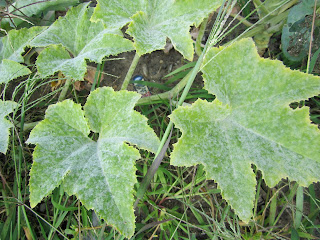Together, we are making a healthy difference in our community. So to all of our fabulous, dedicated volunteers (and bees) we say THANK YOU! Without you none of this would be possible.
Tuesday, September 27, 2011
Busy Bees, Busy Volunteers
Thursday, September 15, 2011
Preschool Diary's
For the past couple years the public, onsite, Bright Horizons, child development center has participated in the giving garden. The children love being out in the garden and getting dirty! Here is an excerpt from a daily parent email about one of their garden visits:
At the garden, Ms Heather and friends got to walk around the garden and check out the different vegetables, fruits and flowers that are growing. It was very exciting to see how much things have grown since our last visit. As we waited for Ms. Alison to get there we had fun running up and down the hill by the garden and played one of our favorite games of duck-duck-gray duck! When Ms. Alison got to the garden we were very excited to put on our garden gloves and get to work. :) We planted marigolds this morning, it was so much Fun! We got the opportunity to see how different marigold seeds are to green bean seeds. (very interesting.) Everyone had a turn to put some marigold seeds into the dirt and had so much fun being able to be apart of something that is so special to Blue Cross! We did such a fantastic job with the walk there and back and definitely are excited for our next garden visit! Everyone also got to take a snap pea back to school with them. They are in your child's cubby. We also came back with a tomato and a green pepper to show our friends.
Tuesday, September 6, 2011
Powdery Mildew
It seems once again this year we have some crops affected with powdery mildew. We spotted cucumber and melon leaves covered in the tall tell signs. Luckily it has struck later in the growing season and hasn't taken over the crops entirely.
We did some research (http://organicgardening.about.com/od/diseases/p/PowderyMildew.htm) and discovered powdery mildew thrives in temperatures between 60 and 80 degrees. Dry, shady conditions are ideal, as are areas with poor air circulation. Planting disease resistant cultivars and making sure you allow for good air flow are two ways to guard against powdery mildew. Inspect plants regularly during warm, dry conditions, and remove any leaves that show signs of infection. Destroy (do not compost!) infected plant parts. A spray made with baking soda, if applied weekly at the first signs of infection, can protect plants against further damage. Plants that are badly infected should be ripped out and destroyed to prevent the disease from spreading further.
A commercially available organic option is Neem oil, which both treats existing powdery mildew and protects the plant against further infection. (One of our gardeners uses Neem oil spray on aphids in her garden, and has found it to be really effective!)
A commercially available organic option is Neem oil, which both treats existing powdery mildew and protects the plant against further infection. (One of our gardeners uses Neem oil spray on aphids in her garden, and has found it to be really effective!)
Interestingly enough, the most effective measure in preventing and treating powdery mildew is to spray the foliage of your plants daily with plain water from the hose. Powdery mildew hates water! The only caveat with this method is to be sure you do it early in the day so that the foliage completely dries before cooler evening temperatures arrive, otherwise you may invite other fungal diseases, such as black spot, into your garden.
If your garden has fallen victim to powdery mildew, how have you treated it?
We would love to hear from you!
Subscribe to:
Comments (Atom)





